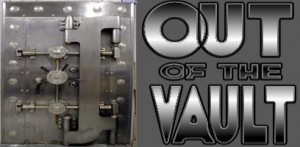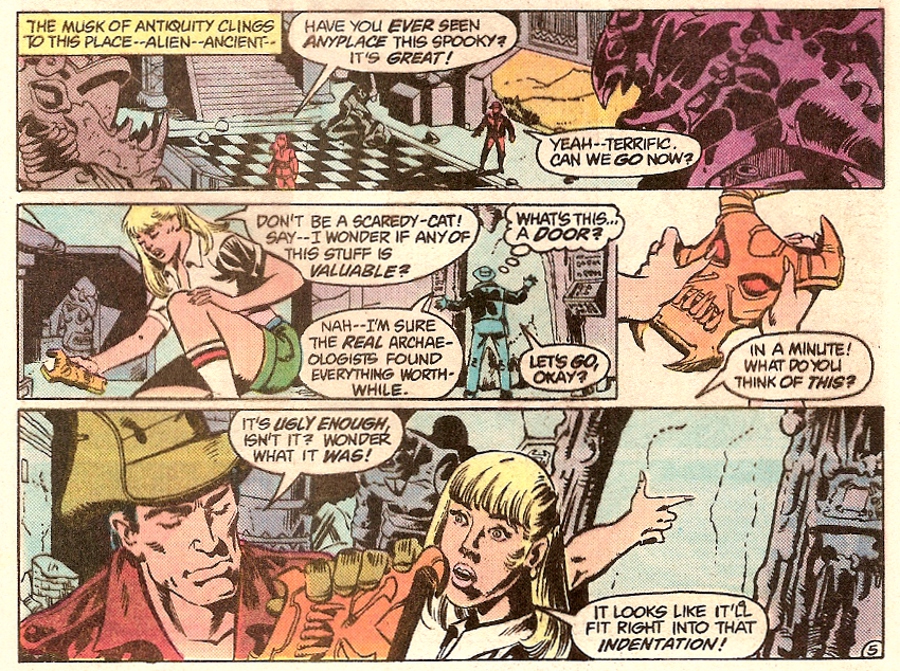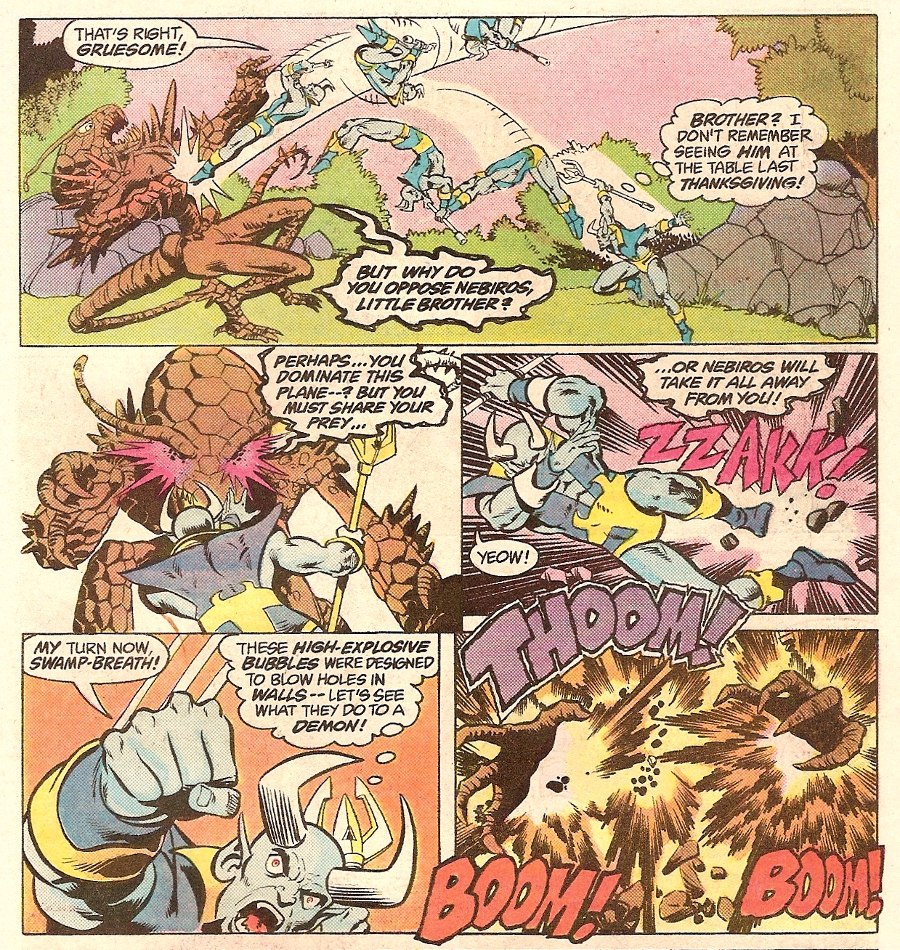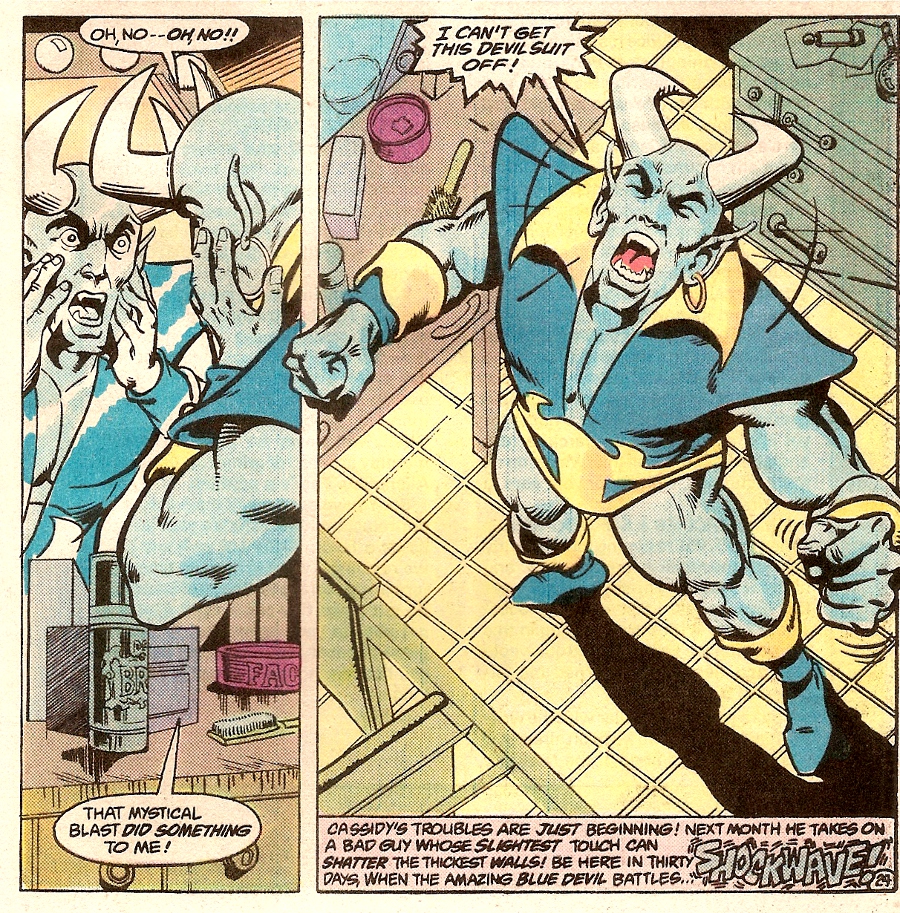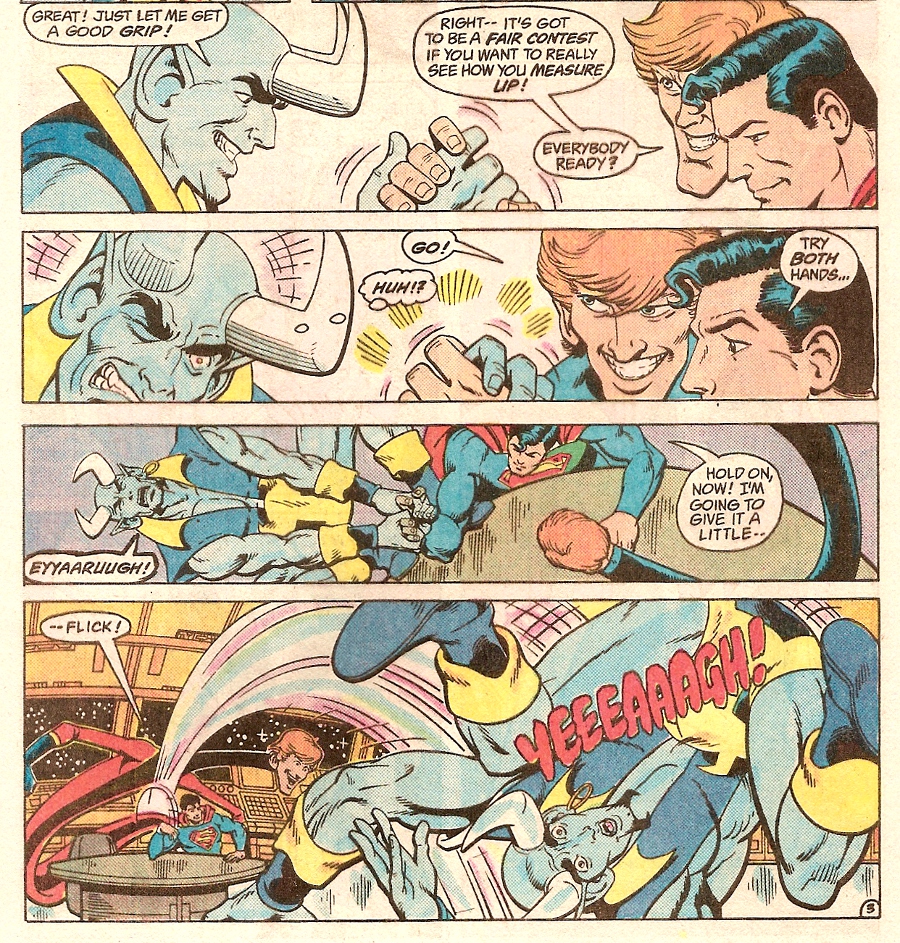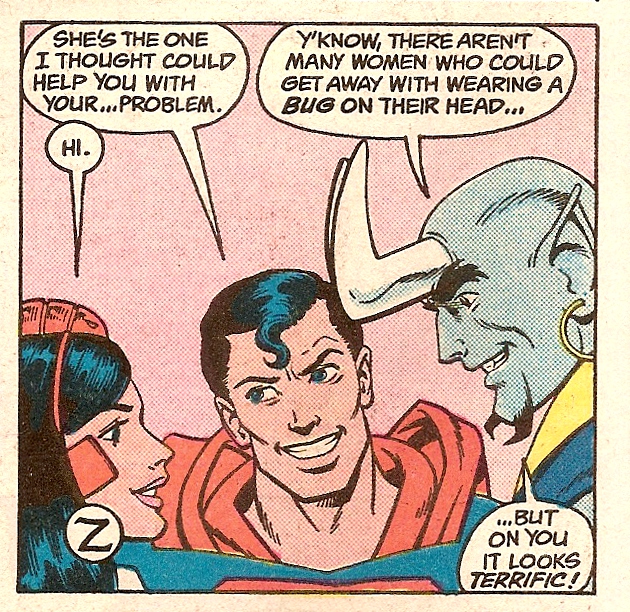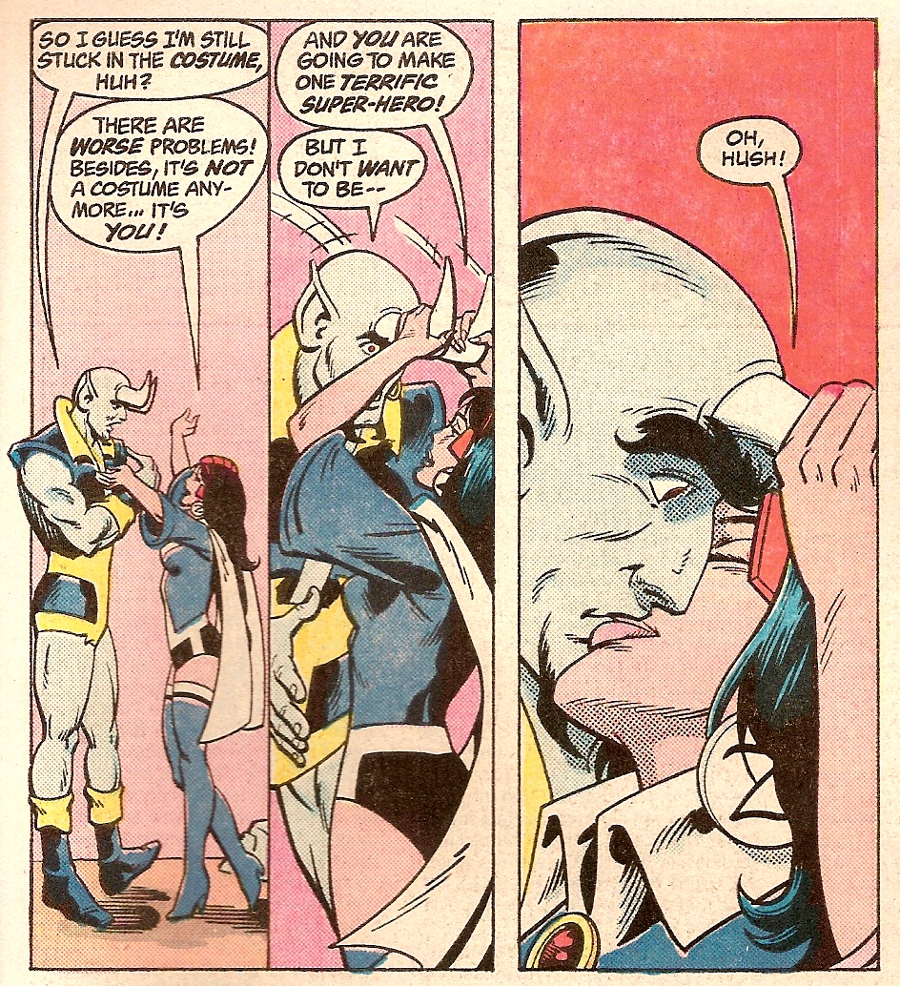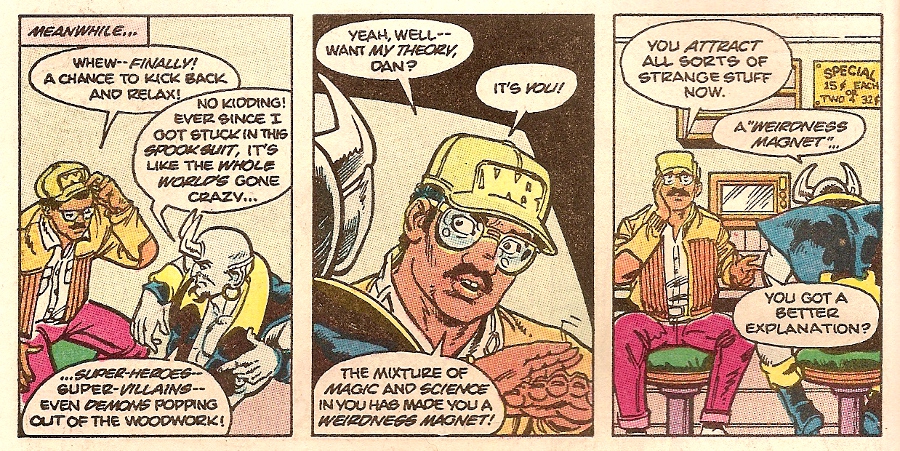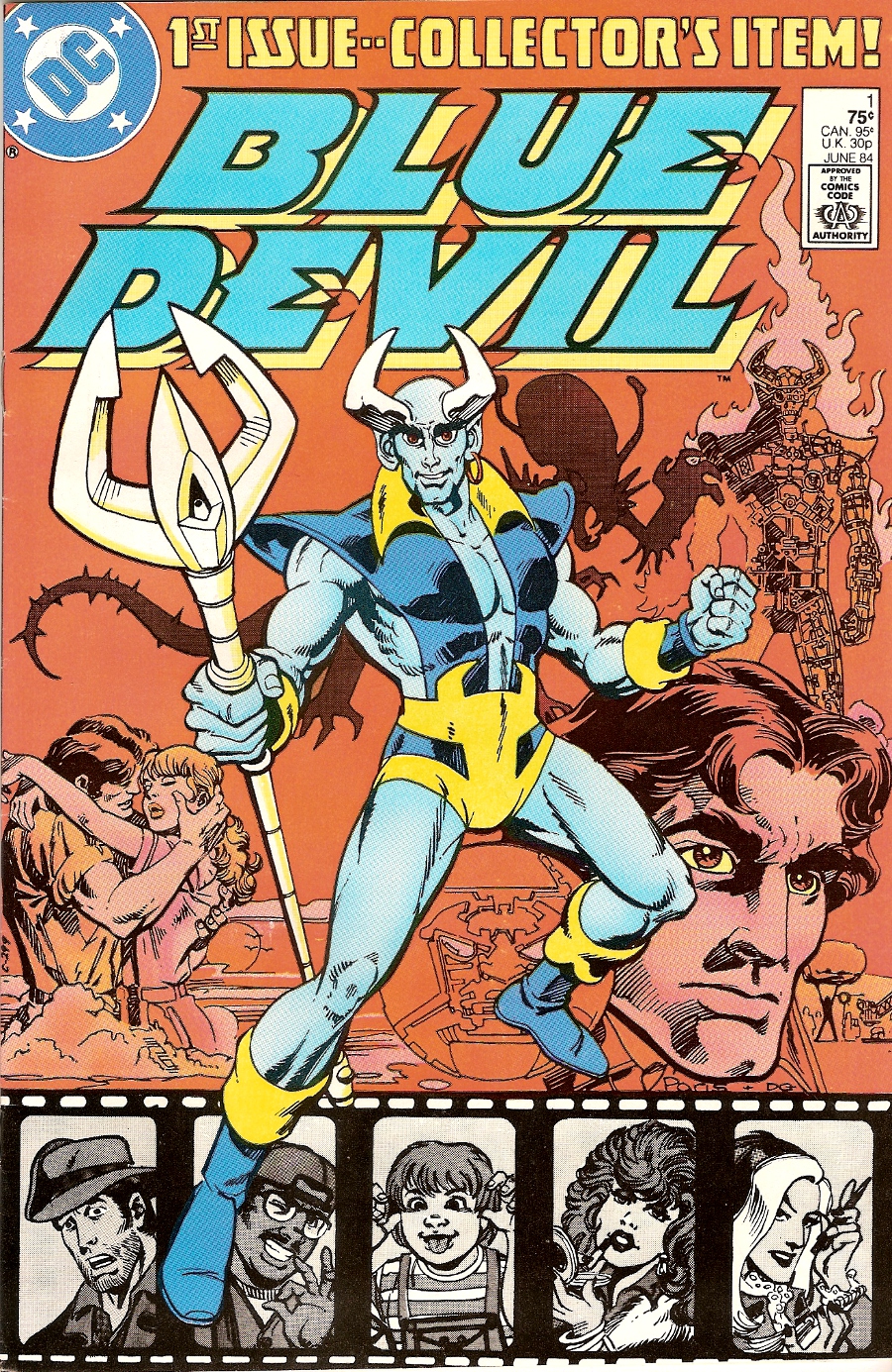 Welcome to the relaunch of Hero Go Home! Today marks the start of our new month-long Halloween extravaganza, featuring Heroes Who Are Also Monsters. First up: Blue Devil!
Welcome to the relaunch of Hero Go Home! Today marks the start of our new month-long Halloween extravaganza, featuring Heroes Who Are Also Monsters. First up: Blue Devil!
In 1984, DC started introducing their new series via inserts in established books. I remember reading a preview of Atari Force that way, and in Fury of Firestorm #24, there appeared a preview of a book called Blue Devil, written by Gary Cohn and Dan Mishkin and pencilled by Paris Cullins.
Dan Cassidy was a special effects man working on a movie that was to feature a devil-like creature. And since this is a comic in a superhero universe, the way he decided to create the demon was to build himself a suit that gave him de facto superpowers. The suit made him strong enough to win a fight with rival special effects man James Jesse, also known as the Trickster, a Flash villain who became a recurring character in Blue Devil.
The book came out that same month in the mid-80’s, just as DC was starting to regain market share  from Marvel on the heels of the runaway success of The New Teen Titans. DC promoted it under the slogan “We’ve Made Comics Fun Again.”
Things took a twist in the first issue of the series, when the crew went to scenic Ile Du Diable to film on location. The film’s stars, vain actor Wayne Tarrant and gorgeous starlet Sharon Scott (on whom Cassidy has a hopeless crush) visit the mysterious temple that gives the island its name.
Yes, because mysterious amulets that just happen to fit into handy wall crevices are left lying on the floors of ancient temples undisturbed for centuries all the time. Seriously, this is like a fourth order idiot plot: it not only requires that every character in the story be an idiot, but everyone in the world stretching back to the beginning of time.
The amulet opens a door to an alternate dimension and releases a monstrous beast called Nebiros, who decides Sharon looks like a delicacy he simply must taste. So once again, Cassidy is called upon to use the power of his special-effects suit to protect his friends.
Cassidy barely manages to survive the battle and send Nebiros back to the other dimension he was trapped in. But there is an unexpected side-effect to being zapped with magic rays from a demon’s eyes.
Well, unexpected to him, anyway. We saw it coming.
In true Marvel/DC fashion, the second story arc links Cassidy to the larger DC Universe by having him fight Superman villain Metallo, after which he meets the big blue ‘S’ himself. Superman then invites Cassidy up to the JLA satellite (which the captions are at great pains to tell us happened before the League relocated to Detroit, which was the then-current version of the team). Cassidy then challenges Superman to an arm-wrestle to test his own strength.
Paris Cullins started out shaky, but was developing a truly appealing style. He was really good at moving characters through space, as well as rendering the exaggerated expressions of characters like Blue Devil and the Elongated Man. However, he wasn’t as good at drawing more normal faces, especially women.
Yeah, Superman just looks kinda pervy, there. And Zatanna, sadly, was out of her fishnets-and-top-hat phase and into the bug-on-her-head stage, which wasn’t as cool. But it was still pretty awesome for the fanboys when, after battling Nebiros a second time, Blue Devil got the lip-lock from Zatanna.
In the next issue, #6, we finally got the mission statement of the series when cameraman Norm explains his theory of why all this stuff keeps happening to Cassidy.
Which was cool, but also, it was at  this point that the book started to fall apart. With Nebiros defeated, Cassidy didn’t really have anything driving him. Also, this issue signalled the departure of Paris Cullins (thought he did continue to provide covers). The book went through a few one-shot fill-ins by talented veterans like Gil Kane and Ernie Colon, and then Alan Kupperberg took over as the series’s regular penciller from issue 12 to issue 30.
And while Kupperberg’s art was capable, it was rarely exciting or funny. And with the kind of slapstick that writers Mishkin and Cohn served up much of the time, it needed a funny artist to make it work.
There were some fun storylines, like a three-issue arc featuring Blue Devil versus the returning Trickster (which, looking back at it, was a major inspiration for what you’ll be seeing here with Digger and Twain in Run, Digger, Run! starting Monday), and another bit where Cassidy’s house develops an interdimensional link to the House of Weirdness (which is where Cain apparently moved after his series, House of Mystery, was cancelled).
But in the end, what with the changes from the aftermath of the Crisis on Infinite Earths and the integration of the Charlton universe into DC continuity, plus Blue Devil‘s middling to poor sales, the book was cancelled with issue 31 and Blue Devil faded into the background as a promising character who just never lived up to his full potential.
Looking at Wikipedia, though, it looks as if he has become a major player in more recent events, although it also seems as if he has completely lost the funny edge that made him special in the first place. Part of me wants to start reading comics again to see what they’ve done with him, and another part of me is afraid to.

